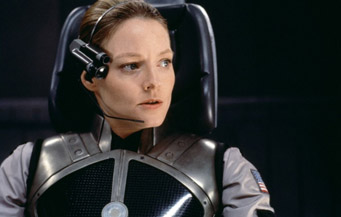|
|
Are You With Us? ContactBy Ryan MazieJuly 8, 2013
Ellie is an interesting character to follow. While not the most original as a scientist who rejects the notion of a higher being in favor for mathematical proofs, she has a moral rationality that makes her endearing. Eventually, Ellie’s life’s work comes to a head when she receives a transmission that is a sequence of prime numbers sent from the star Vega, 26 light years away. Soon a television signal is received and suddenly the world is enthralled (for better and worse) by Arroway’s discovery of extraterrestrial life. While aliens certainly do not come in peace in this weekend’s epic blockbuster Pacific Rim (Contact was released the same weekend 16 years ago), in this movie, the hostile nature of the aliens is not really explored. I thought that was an interesting exclusion. In favor, director Robert Zemeckis chooses to philosophize about whether contacting the aliens will corrupt religion as we know it. It gives the movie a different flavor than most other sci-fi films, but unfortunately the flavor is blander than the cast and crew intended for it to be. While the space jargon comes out fast and furious on a graduate school level, the philosophical debates are fairly high school. Supposedly, this is an aspect captured much better in the book the film is adapted from, written by famed astrophysicist Carl Sagan (who, I will admit, I never even heard of until researching this film). Or, the book was adapted from the film in actuality. Sagan co-wrote the screenplay in 1979 but the dreaded “development hell” put production into a standstill. Sagan decided to format his screenplay into a book that was released as a bestseller in 1985. While strong sales numbers made the project a priority again, a number of script revisions, false starts, and a director’s game of musical chairs kept the project from release until July 1997 (unfortunately a few months after Sagan passed away).
|

|
|
|

|
Friday, April 19, 2024
© 2024 Box Office Prophets, a division of One Of Us, Inc.


